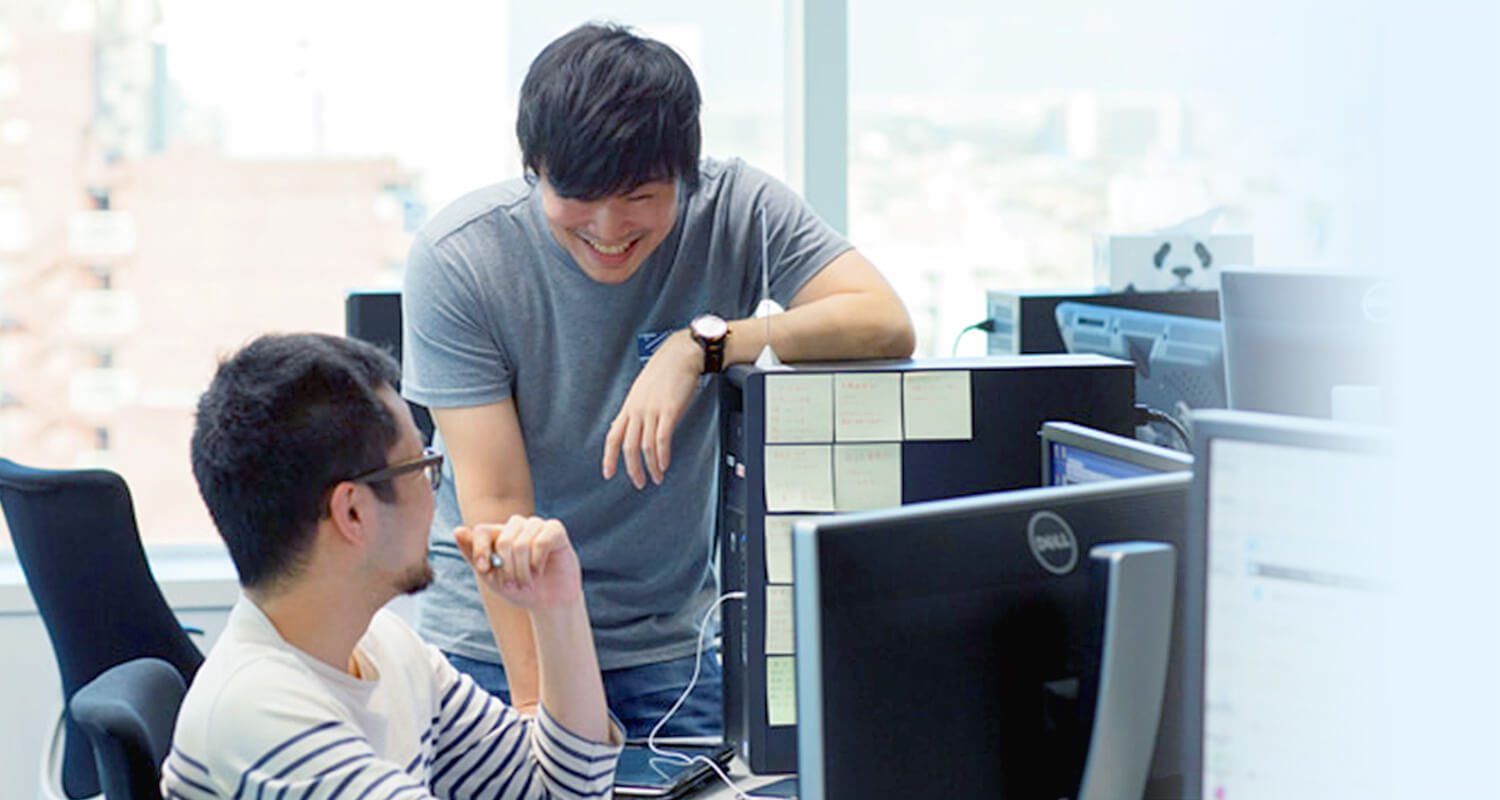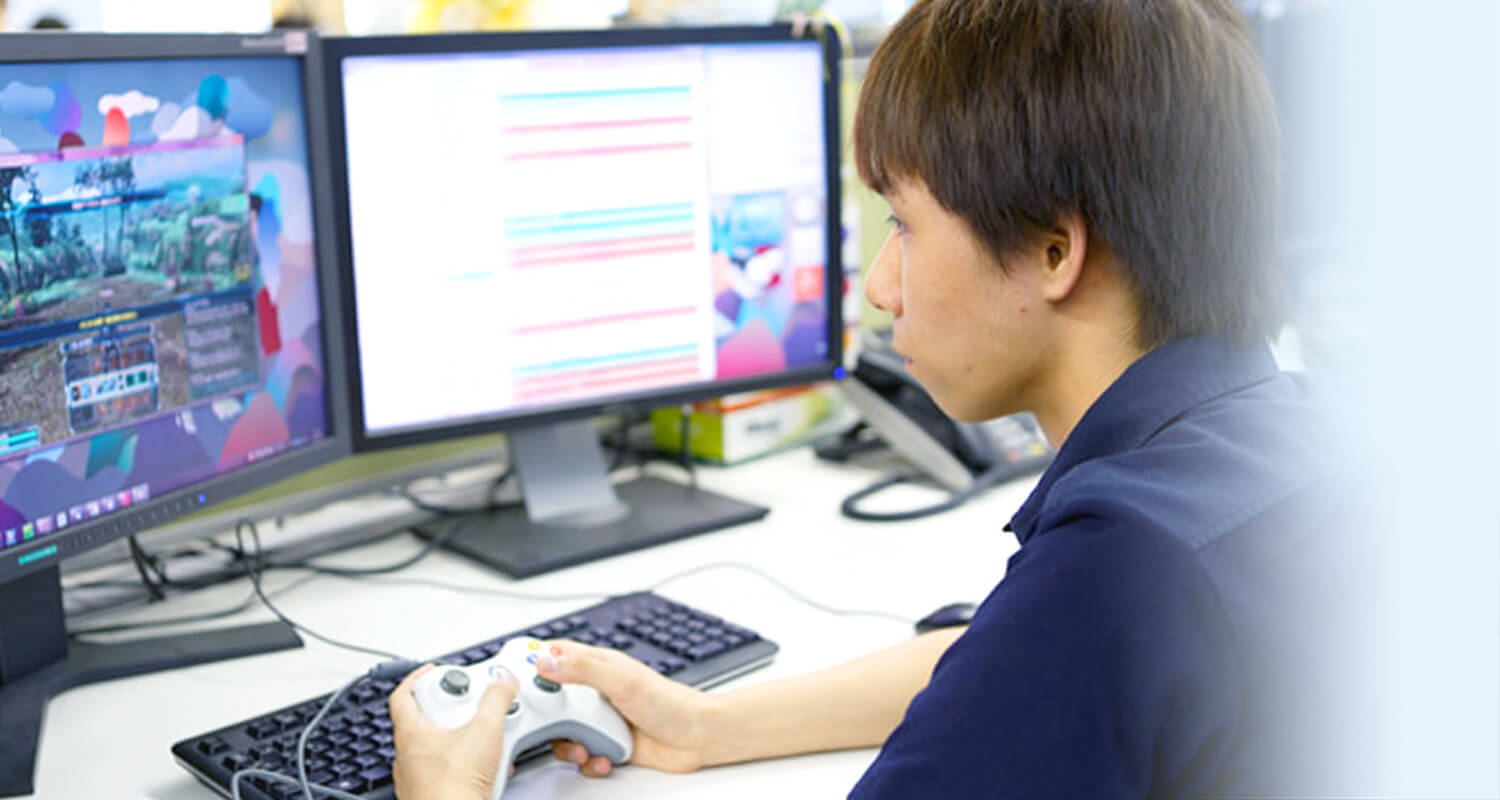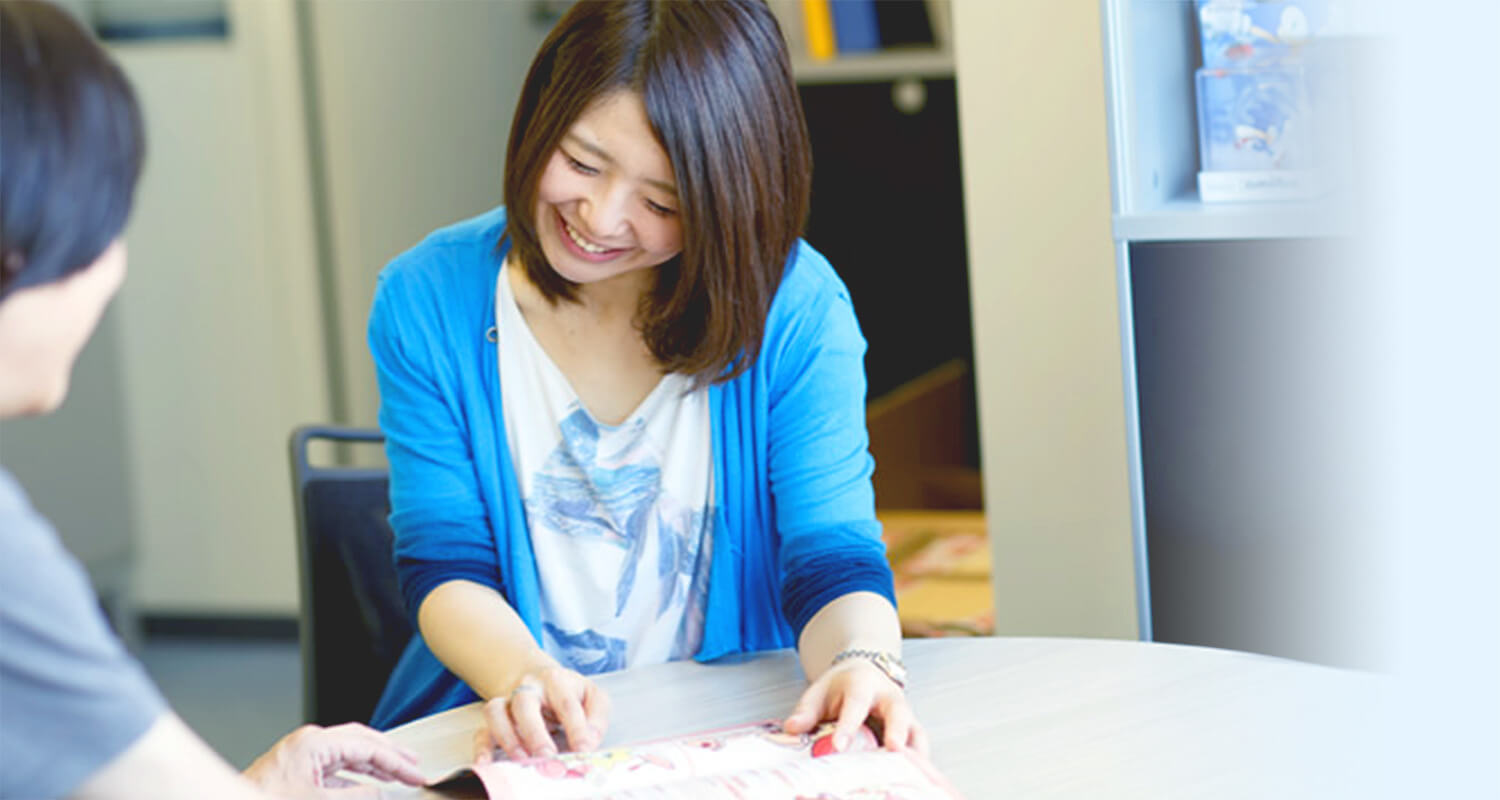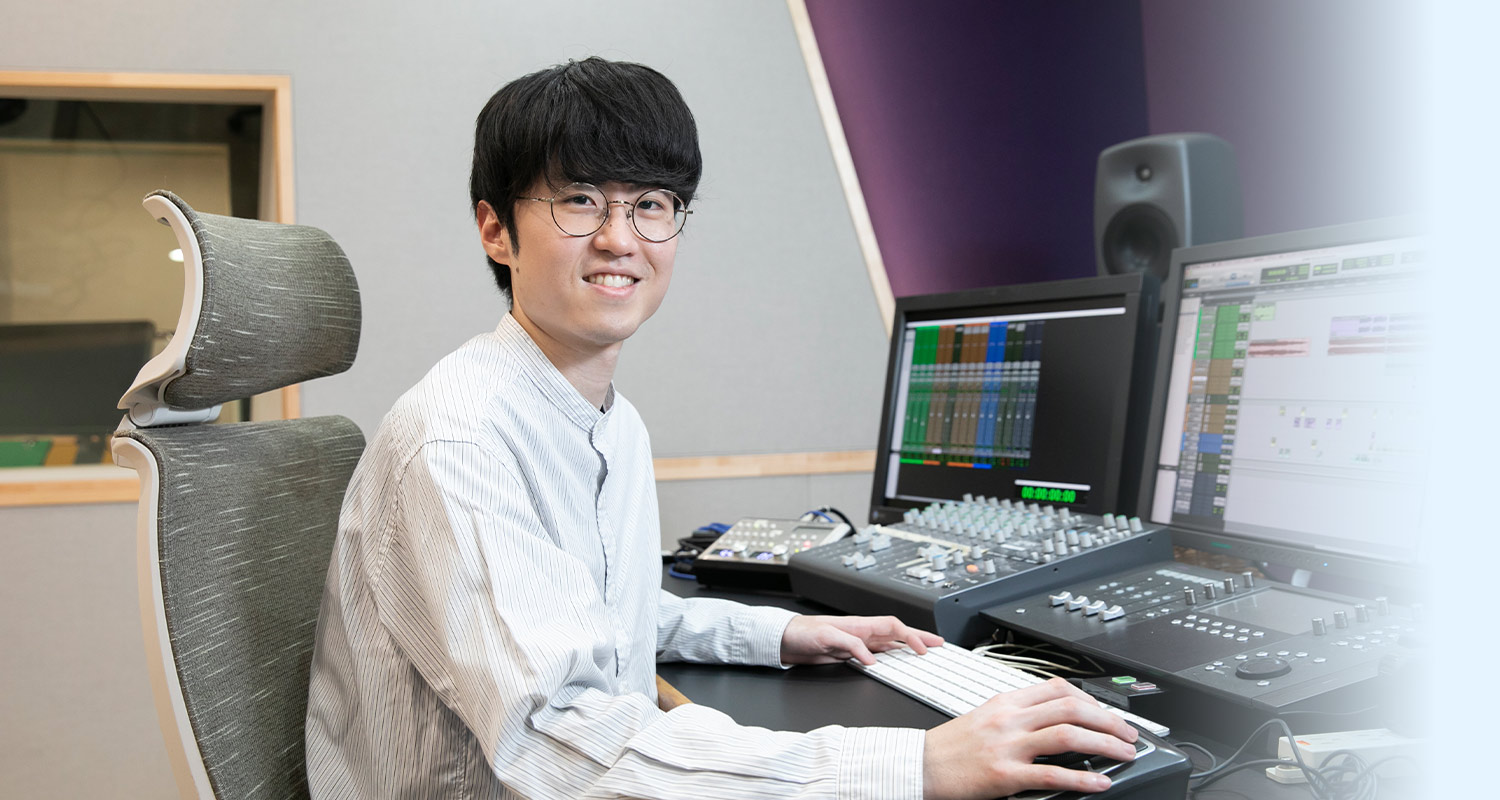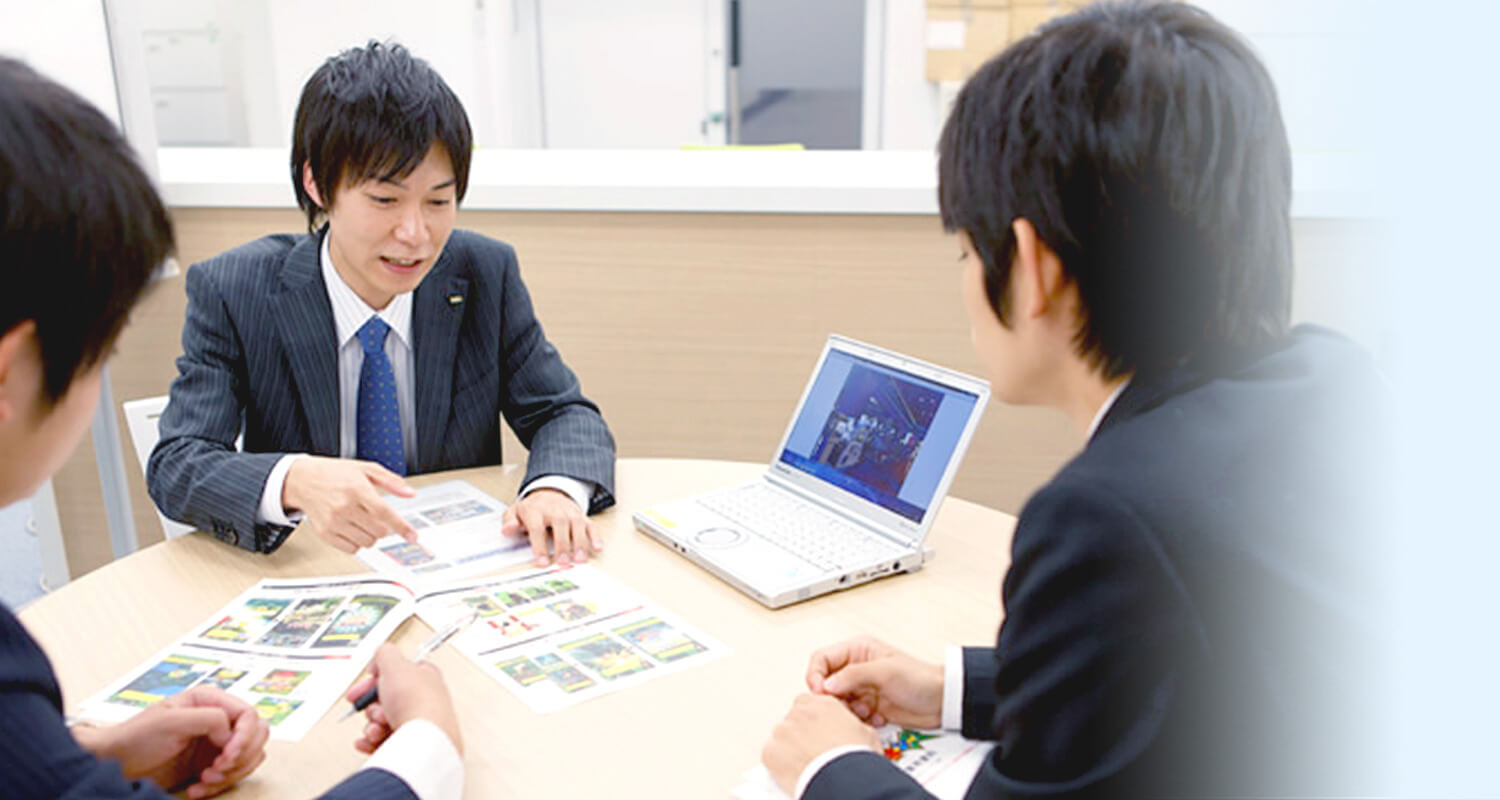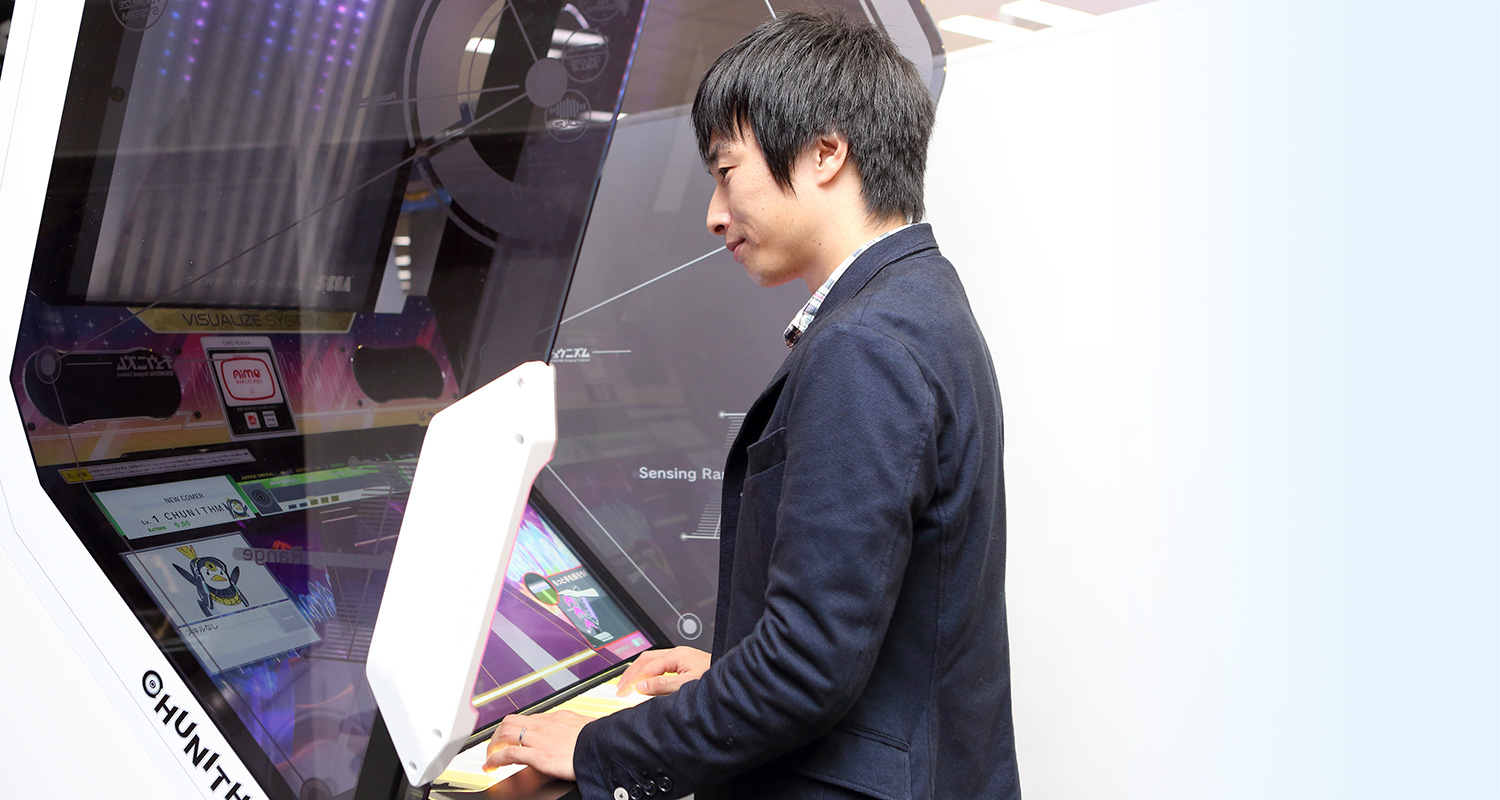Game Designer
Game designers perform a variety of tasks, including drafting plans, preparing proposals, creating specifications, managing data, balance adjustments, managing the production process and operations.
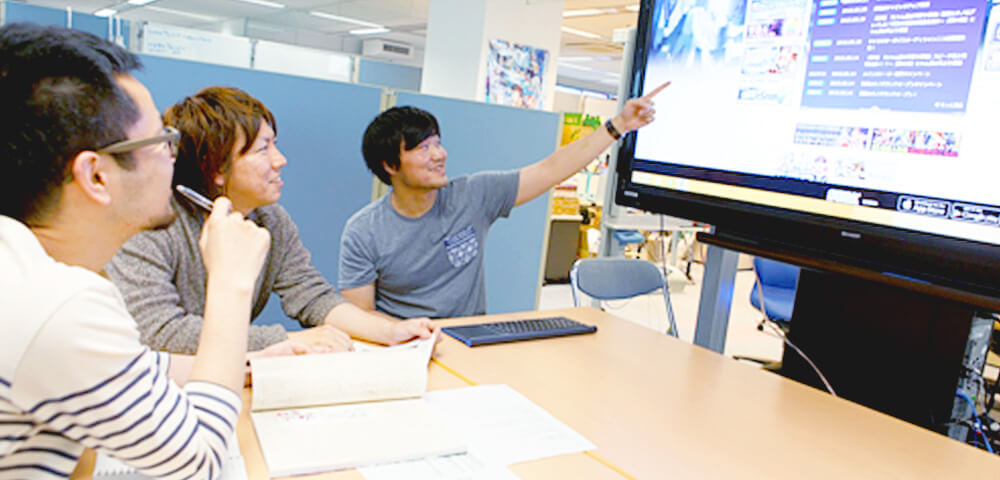
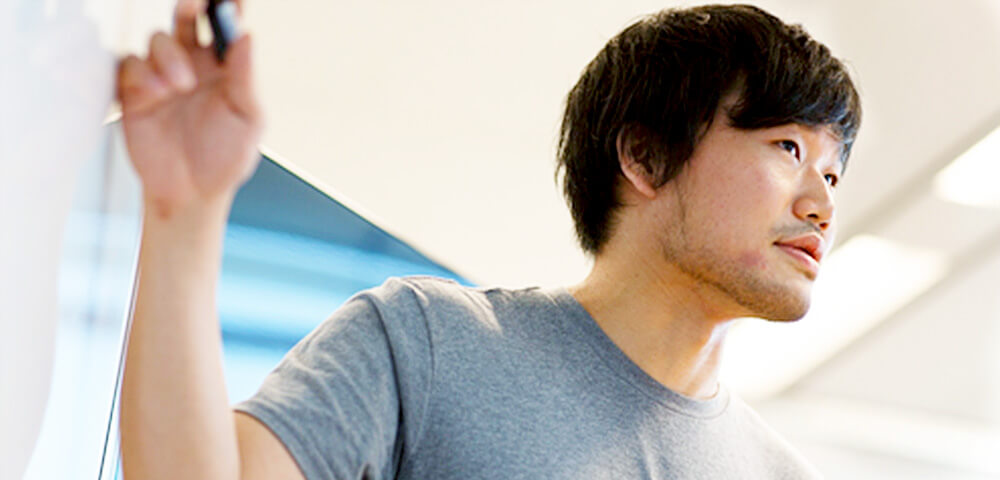
Drafting and Preparing Plan Proposals
In general, this work involves planting the seeds for upcoming games and developing their core concepts.
At this stage, it is essential to convey the unique aspects and features of a game to all creative staff involved in its production, such as artists and programmers. Accomplishing this requires both an abundance of creativity and perhaps more importantly, the ability to precisely yet concisely express ideas.
Creating and Managing Data/
Balance Adjustment
Many staff members are involved in the development of a single game. Game designers prepare specification documents that organize elements such as gameplay concepts, graphic design, controls, music and sound in order to convey vital information to each staff member. As work proceeds, game designers will liaise with team members to confirm if specifications are being followed and make adjustments based on their feedback.
Game designers also carry out balance adjustments for factors such as difficulty and consistency, which are essential for creating an exciting game. To accomplish this, game designers draw upon broad base of game-related knowledge, a well-developed stylistic sense and information from a variety of genres.
Production Process Management
Game development is a joint effort involving many staff members. Creating an excellent game requires planned goals and concepts along with the designer's own wishes to be clearly communicated. At the same time, it is important to be attentive to feedback, concerns and advice from the team.
Many staff members involved in the creation of a game are very passionate about their areas of expertise. This means guiding a group towards a singular goal will require excellent leadership, communication and social skills including good etiquette. Game designers will call upon all of these skills as they lead a project towards delivery within the established timeframe while managing overall quality.
Operations
This role involves drawing upon data resources used to implement events, policies and such. This area is particularly of critical importance for the success of free-to-play games and online games.
Operations includes a wide variety of tasks. Staff members analyze a slough of operating performance indicators, including user numbers and persistency rates, in order to identify issues, propose improvement plans and design policies.
Programmer
Programmers are responsible for creating tools, libraries and other resources that are required for game and application development.
These days, gaming experiences are becoming more and more complex, merging with the Internet and real life.
How can we implement even more realistic CG? What network structure will allow larger numbers of players to be accommodated efficiently? These are some examples of the evolving complexity of content development. A successful programmer requires a strong grounding in technical know-how from which to build interest and extensive knowledge in a variety of specialty fields.
* Technical Artist roles will be available in the "Designer" Seciton of this site.
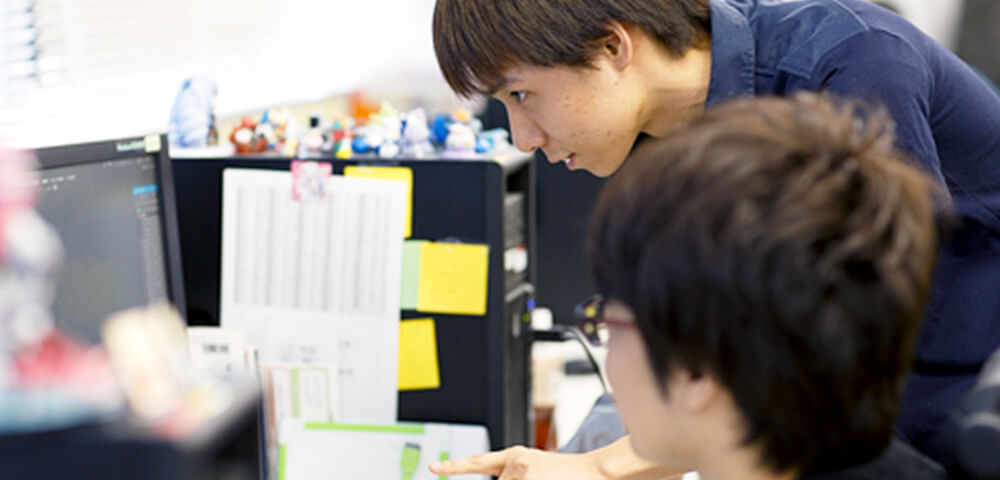
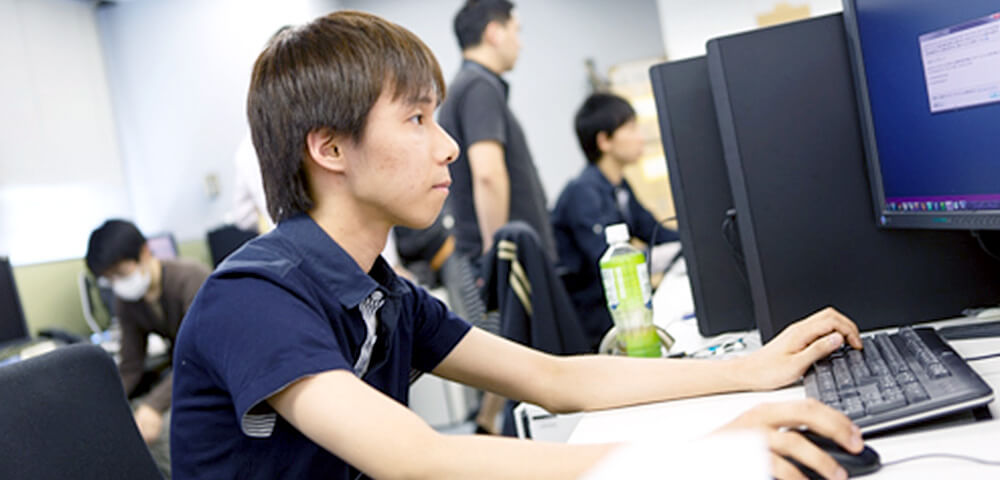
Game
Application Development
In cooperation with game designers and artists, we develop game applications for consumer game consoles, smartphone applications, arcade games, and so on.
The sensory aspects which cannot be expressed in a proposal are where the programmer's sense comes into play, since programmers are in charge of the majority of the direct user experience.
Server Software Development & Web Service Development
In cooperation with other technical staff, such as game application developers and network engineers, programmers design, develop, and maintain game servers that support console and smartphone app experiences from behind the scenes in addition to the web services that connect games and players.
Since programmers are often in charge of a wide range of tasks from front-end to back-end, you will be able to gain a variety of experience from upstream to downstream of the development process.
Tool Development &
Library Development
In order to facilitate effective content development, programmers develop and maintain software resources such as libraries, tools and plugins for CG design tools. In addition, they are responsible for experimentation and evaluation of new technologies such as image recognition, voice recognition and augmented reality.
These resources will become the foundation for overall development, and demand extensive knowledge of and mastery over the latest technologies. In addition, a sense for programming that incorporates the ability to design software from the users' point of view is essential for building an environment where all team members can work effectively.
Artist
To contribute to our ongoing creation of diverse content, the SEGA Group seeks artists with strong individuality. While the title of artist may sound simple in nature, the role holds many responsibilities and requires collaborating with many team members to create finished products.
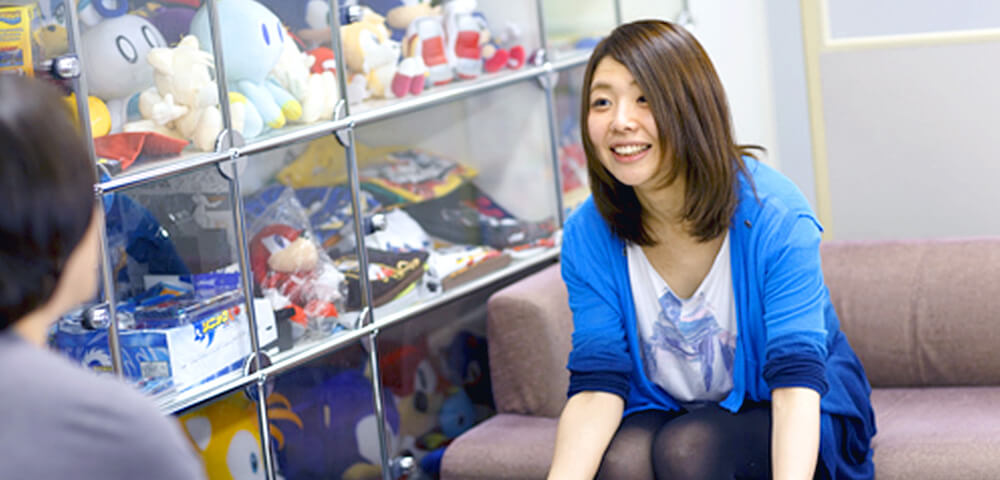
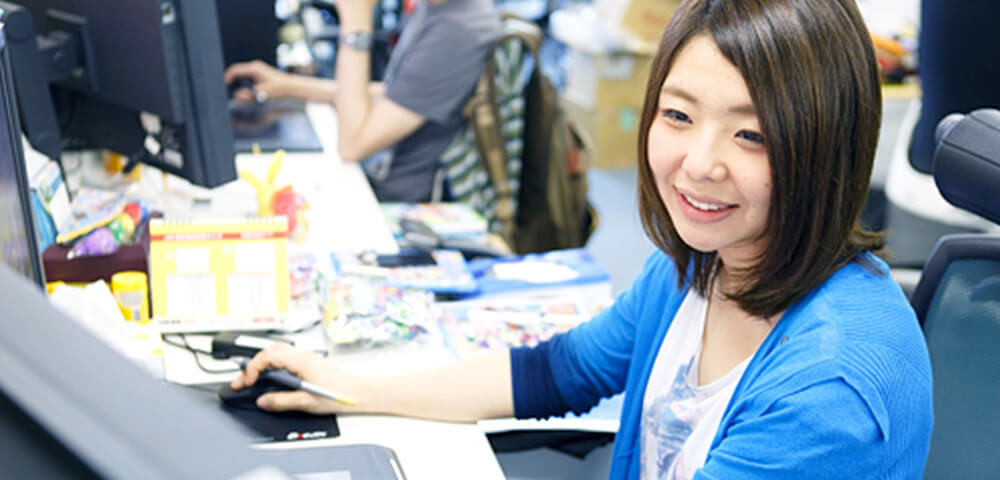
Character Creation
From unique heroes with deep personalities to riveting monsters, an artist's job is to create the characters which will bring a game to life.
Using a range of styles from realistic to cartoonish, artists create 2D and 3D CG representations of compelling characters. Depending on the game title, their responsibilities may begin with creating character designs.
Background Creation
This work involves creation of elements such as scenery, buildings and props to bring a sense of purpose and depth to the game world.
From sketching a scene, modelling, creating textures, assigning textures, lighting to other setting details, an artist works to create a lasting impression on users with their background art.
Motion Creation
This work involves assigning movements that suit each character's individual personality.
From facial expressions to body movements right down to the fingertips, every motion is created through techniques that include motion capture and manual design. Unless it can move, even the most compelling character is nothing more than a lifeless doll. Motion animates these characters and helps to create a vibrant gaming world.
Effect Creation
Of the many various elements that comprise a game world, visual effects serve to create memorable images by emphasizing important occurrences and transitions.
Artists are responsible for creating special effects, such as enchanting magic, gritty combat, majestic dragons, fiery crashes and dazzling 'GOAL' text, which will be important factors in every type of scene.
User
Interface Creation
User interface elements include the many types of menus and displays, including in-game information, titles and logos that embody a game's entire concept. Displays for critical gameplay information, such as health and score, are also included as artists are required to design each element to be intuitive while matching the game's overall theme.
The user interface, including its animation, holds an important role in creating a user-friendly environment.
Event Scene Editing
This work involves editing of dramatic scenes within the game. Motions, camera work, lighting and post-effects each contribute to creation of a scene.
To fully immerse users in a game's story, it takes more than just technical designs. Artists must also know the story and understand how to visually express it. In some cases, traditional video editing techniques, such as show-style visuals, are involved.
Technical
Artist
In recent years, there has been an increase in demand for designers with a mastery of technical aspects.
Technical artists have a strong understanding of both visual expression and technology. They are capable of creating motion rigs, shaders, scripts and tools, as well as proposing and implementing an efficient workflow. These abilities greatly contribute to elevating the production quality of each artist on the team.
Sound
We handle all aspects of audio production for console, arcade, and mobile games.
This includes composing songs and SFX, production sound mixing, voice recording, adding audio to the games, and working with outside partners. Our diverse range of tasks provides ample opportunities to grow and gain new skills. For that reason, we don't require, or expect, our applicants to have all of these skills from the get-go.
Instead, we'd love to see strong team players who have a desire to contribute to the various aspects of developing audio for video games, as we often must work collaboratively in our department and with other departments.
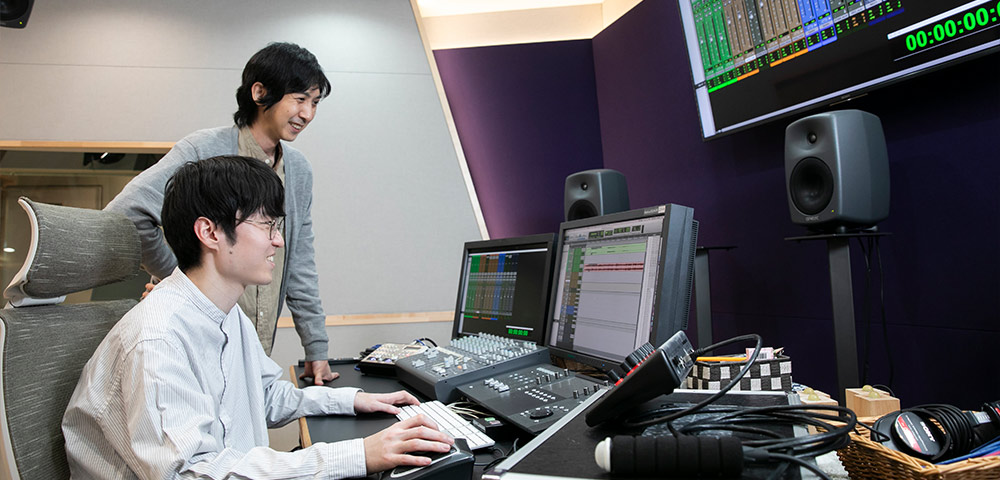
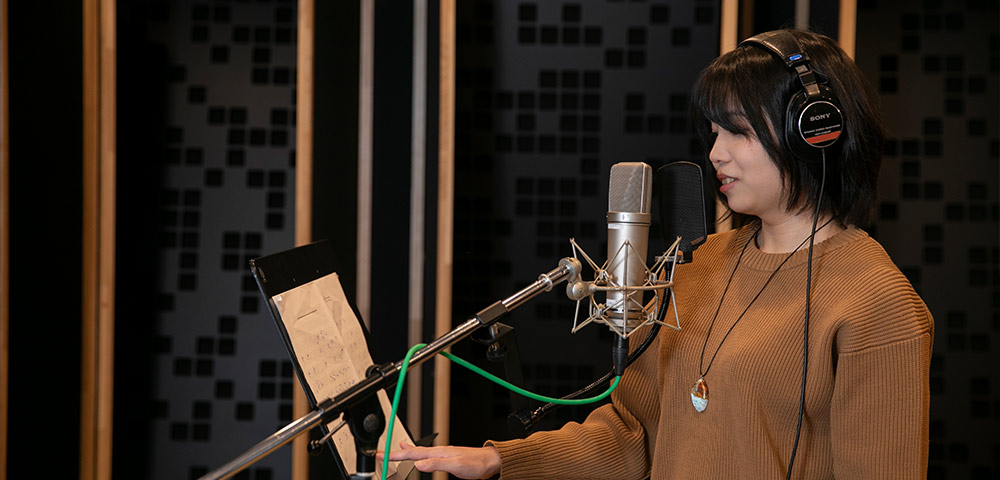
Sound Design
The Sound Design team shapes a game's atmosphere by planning out all of its audio.
We work with multiple departments to fine-tune our audio tracks to ensure they are a perfect match with the game's concept and gameplay, and take full advantage of what the platform has to offer. Once we have an idea of how the BGM, SFX and voices would fit together, we can flesh out the audio and focus on how to instill certain feelings in our players.
Music Production
Our composers create soundtracks that A single game can contain a large variety of tracks for different situations. As such, composers must be versatile in working with a range of styles, genres and sounds. Our duties include giving musical direction, creating tracks with vocals, arranging existing tracks, recording instruments, and mixing audio.
Additionally, you will have the chance to work on original music products. The work you do with us doesn't just reach our player base; your music can touch the hearts of an even broader audience.
Sound Effect Production
This includes sound effects that go into a game, from the character's movements to the system audio.
By understanding and effectively utilizing the properties that make up audio, the sound effects in our games will feel natural to our players' ears.
Sound effects that fit a game's setting will draw players into its world, creating an even richer experience.
Audio Editing
Our chief duty is to adjust our games' audio so that players can easily follow the narration and the dialogue of our dynamic characters.
We consider the character's development, their dialogue and the unique aspects of their voice to balance the audio that accompanies them, adding sound effects and reducing noise where necessary to create the best audio experience for the players.
Production Sound Mixing
This involves balancing the game's volume to add a sense of depth to each of the game's audio tracks: be it the character's voices, the narration, the background music, or the sound effects.
The audio must invoke the same feelings as the scene during which it is played, placing emphasis where necessary to guide players along their journey. First, we consider the reaction we'd like to elicit from the players. Then, we fine-tune the placement and timing of the audio to enhance the on-screen visuals even further.
Regular Position
For regular position, there are a wide variety of career-track positions and duties in order to deliver completed products and services to customers. The positions introduced here are just some examples of the positions we offer. We will determine your first career after confirming your orientation and expertise from a wide range of positions.


Domestic and Overseas Sales
Our objective is to grow the sales of SEGA's games and IP-related products in Japan and the Asian market.
Marketing
Work in this department involves researching the needs of our overseas customers, organizing PR events, and digital advertising. Key duties also include analyzing advertising metrics and proposing effective measures.
Overseas Project Development
We collaborate with companies in other parts of Asia to launch new businesses and expand SEGA's IPs and content library.
Overseas Licensing
We manage the licensing and distribution of foreign-made titles in regions where SEGA holds distribution rights.
Our duties include negotiating to acquire titles, sales planning and project supervision.
Overseas Studio Support
The Bridge Team serves as a liaison between SEGA's Japanese and western game studios: supporting projects made by teams in America and Europe while expanding the overseas market for titles produced in Japan.
Prize Planning & Development
We look into popular characters from various IPs, then create plushies and figurines that serve as crane game prizes in both Japanese and overseas arcades.
*Employees accepted into this branch of our business are assigned to SEGA FAVE CORPORATION. (This will not change your location of work.)
Business Planning
Conducting business environment analysis, including trend research, is a major part of our job. With the aim of expanding SEGA's business abroad, we work with SEGA's overseas group company partners and supervise the management strategies of each of SEGA's studios.
Corporate
Work in this department can be broken up into HR and business management tasks. HR work offers many chances for personal growth, as you aid the HR team in its search for future leaders of SEGA. On the business management side, we quantitatively analyze SEGA's performance to support SEGA's direction as a company and its future business endeavors. We also implement corporate governance within each company of the SEGA GROUP and handle financial support activities.
Technical Positions
Amusement machines operated at amusement facilities differ from console games and offer their own interesting and rewarding experiences as they have original cabinets with a variety of mechanical elements and devices.
The technical fields described here, mechanical design and electric / circuit / control design, utilize specialized knowledge and teamwork to deliver innovative, fun and safe products to our market. Working on a wide variety of game types, these roles are distinguished by the unique issues and challenges created by every new title.
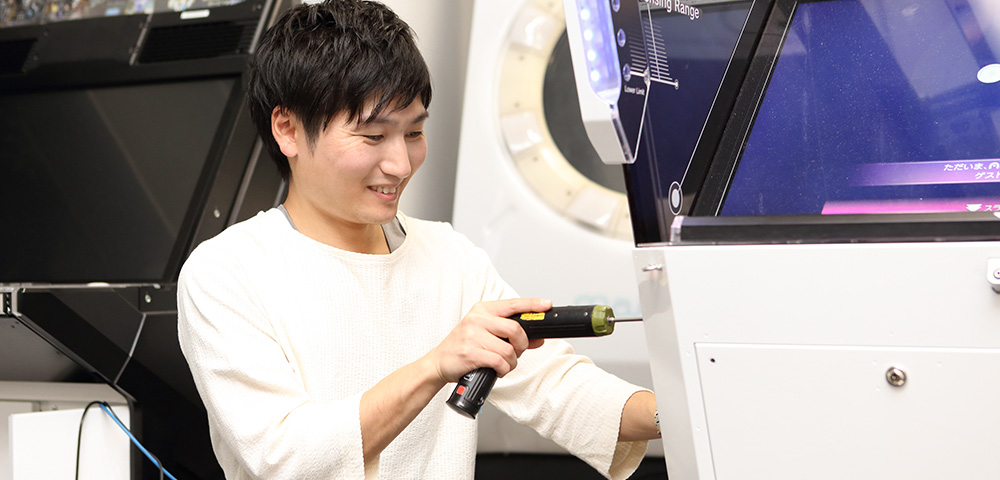
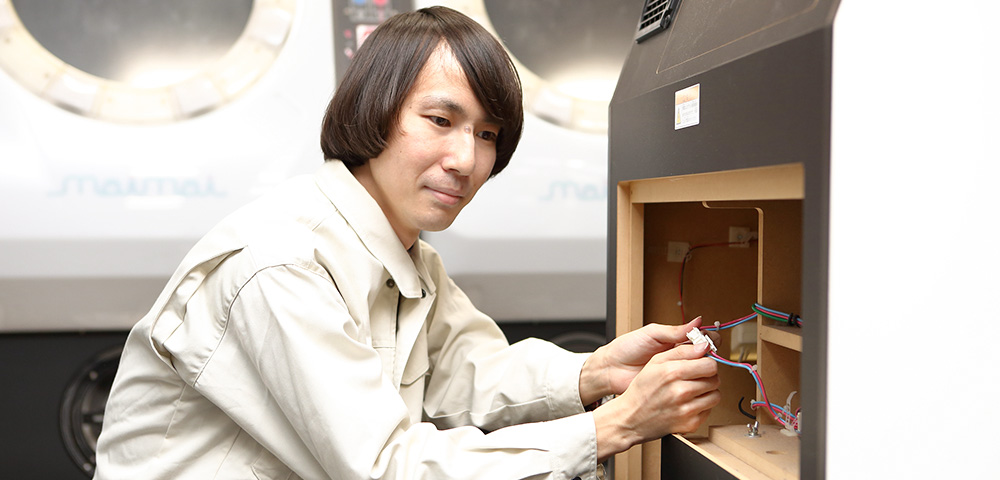
Mechanical Design
This role involves mechanical design for cabinets, controllers, mechanical gimmicks and more. In pursuit of the ultimate user experience, Mechanical Designers carry out operation verification and reliability tests on prototypes to guarantee that the final product will be both fun and safe.
Electric / Circuit / Control Designer
This role involves system design for game device hardware along with applications or firmware for game boards and such. Other responsibilities include researching new technologies as well as technical market research for Japan and overseas regions.

